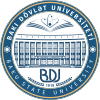The Department of Facilities Management (DFM) consists of three departments and four sectors:
- Department of General Services
- Repair and Construction Works Sector
- Landscaping and Cleaning Sector
- Service Organization Department
- Utility and Communication Services Sector
- Transport Services Sector
- Public Catering Service (operating as a sector)
- Occupational Safety and Security Department
MAIN GOAL OF THE DFM
The primary goal of the DFM is to enhance employee productivity and strengthen their connection to the university by meeting material, moral, and social needs.
MAIN FUNCTIONS OF THE DFM
- Functions of the General Services Department
The department performs the following functions:
Overseeing the general services operations of the department and its divisions in line with the university's goals and strategic development requirements.
Developing strategic and tactical plans, normative documents, reports, and information in accordance with the university's development strategy.
Reviewing incoming requests to the university within the department's jurisdiction and responding to letters and inquiries from legal and physical entities.
Performing other functions as prescribed by legislation.
- Functions of the Repair and Construction Works Sector
Executing tasks related to project design, construction, production, labor, and management organization, metrological support, technical supervision, and scientific-technical activities.
Conducting technical-economic analyses and providing comprehensive justification for decisions, including investigating ways to optimize work and service timelines.
Providing methodological and practical assistance in the implementation of projects, programs, plans, and contracts; examining technical documents; monitoring equipment status and usage; identifying internal resources; and addressing deficiencies and malfunctions.
- Functions of the Landscaping and Cleaning Sector
Ensuring timely cleaning of sidewalks, courtyards, and other areas around serviced buildings, including snow and ice removal and sand application.
Maintaining cleanliness within university premises, including sweeping and mopping floors, cleaning windows and doors, wiping glass, dusting furniture and equipment, and preparing and tidying workspaces.
- Functions of the Service Organization Department
Overseeing routine and major repairs within the university and ensuring uninterrupted functionality of communication systems in lecture halls, subject rooms, and offices.
Proposing recommendations for training and professional development of specialists in the relevant fields.
Exercising rights derived from standard-setting activities in the relevant areas.
Performing other rights as stipulated by legislation.
- Functions of the Utility and Communication Services Sector
Ensuring uninterrupted and technically correct operation of equipment, maintaining it in a reliable and functional state.
Collaborating with university divisions, unions, and labor collectives to prepare and monitor expenditure estimates, implement collective agreements, and ensure compliance with labor-related directives and orders.
- Functions of the Transport Services Sector
Preparing orders for spare parts for vehicles, drafting technical documentation related to repairs, and reporting on work completed.
Monitoring the timely provision of necessary spare parts for vehicles.
Resolving organizational issues related to vehicle maintenance and repairs, including acquiring knowledge of repair technologies.
- Functions of the Occupational Safety and Security Department
Identifying hazardous and harmful production factors at workplaces.
Assisting university divisions in certifying and attesting workplaces and production equipment in compliance with occupational safety standards.
Collaborating with structural leaders and other services to prevent workplace accidents and occupational diseases, improve labor conditions, and align them with safety regulations.
Preparing training materials and guidelines for occupational safety and verifying staff knowledge of safety regulations.
Participating in commissions evaluating occupational safety knowledge among university employees.

